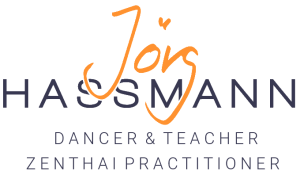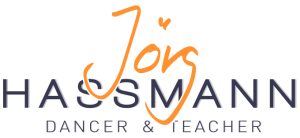What’s the point? Thoughts about my Somatic Improvisation classes on Zoom
What’s the point? What am I trying to do here when I teach Somatic Improvistion classes online – instead of Contact Imrovisation in proper studios? What do participants get out of this and what do I expect from them?
I never wanted to teach online classes. Teaching into a flat screen without being able to sense the space, the energy of the people, having these subtle or direct feedback mechanisms that nurture my teaching so much… But I am endlessly grateful that Marting Hughes dragged me into it with his enthusiasm – exploring the dance and its ability to connect us on many levels in completely new ways. For me these experiences are very strongly based on all the knowledge we gained in regular studios practicing Contact Improvisation.
I want to offer a space, where people can dive into a somatic exploration, that nurtures them on multiple levels. Somatic exploration means, that the focus of the mind is in the body, harvesting sensations, wondering what creates connections in the body that makes one feel more alive, full, complete, differenciated, easeful, stronger …
I wish that the offer contains foci, that are clear enough to be revisited in every day life.
I like the idea of exploration, where it is less about being giving answers and either I get it or I don’t. Instead I like the idea of trying out, being inspired to play around in order to create sensations and experiences, that raises new curiosities, directions and questions. I want to trust that being in the zone of passionately wondering and experiencing will have a valuable outcome, even though it is unclear what it might be. Trusting the body or body-mind system to find and create what it needs.
For that I believe in a zooming approach, where people are supported to find clear foci, looking and sensing into things as deeply and precisely as we possibly can in the moment. And on the other hand to zoom out, to let the body do, to noodle around and allow random things to happen with a gentle witnessing awareness of the mind. It is the cycle that Eva Karczag introduced me to, something like:
getting lost in movement –
finding an interest – diving into that – developing it –
letting go & getting lost in movement again
Encouraging self responsibilty is essential for my approach. We all have different timings. To a certain degree we can follow instructions, while keeping our own curiosity going. I want to encourage participants to be aware, when they get really into something and valueing these moments by following the emerging curiosities. If my voice and suggestions can be used as background music, quite a bit of what I say will still be heard and unconsciously intergrated. And if not that’s also fine. People can find their way back into the teaching proposals at some point. It just needs trust from both sides. Me as the teacher and from the students side.
Another reason for doing these classes is to experience connections to others. I am still amazed how much of the sense of „We are dancing togeher!“ we can experience by just seeing each other on the screen. And that includes to trust the connection to eachother, while not looking at the screen. We found a way where we can work with one partner, while still being able to hear instructions from the teacher or having music as a support. Being seeing, seeing the other and diving into a dance, where effeortlessly inspirations spill over from one living room to a space on different city or continent …
And we also connect to the whole group. Acknowledging that we are sharing time and focus is already supporting the sense of inter-connectedness. Looking at the screen in Gallery-view while people sense themselves might help to have a clearer picture of the ‘us’. And the sharings at the end support a sense of ‘we are in this together’ through random familiarities & inspirations or through a common topic.

